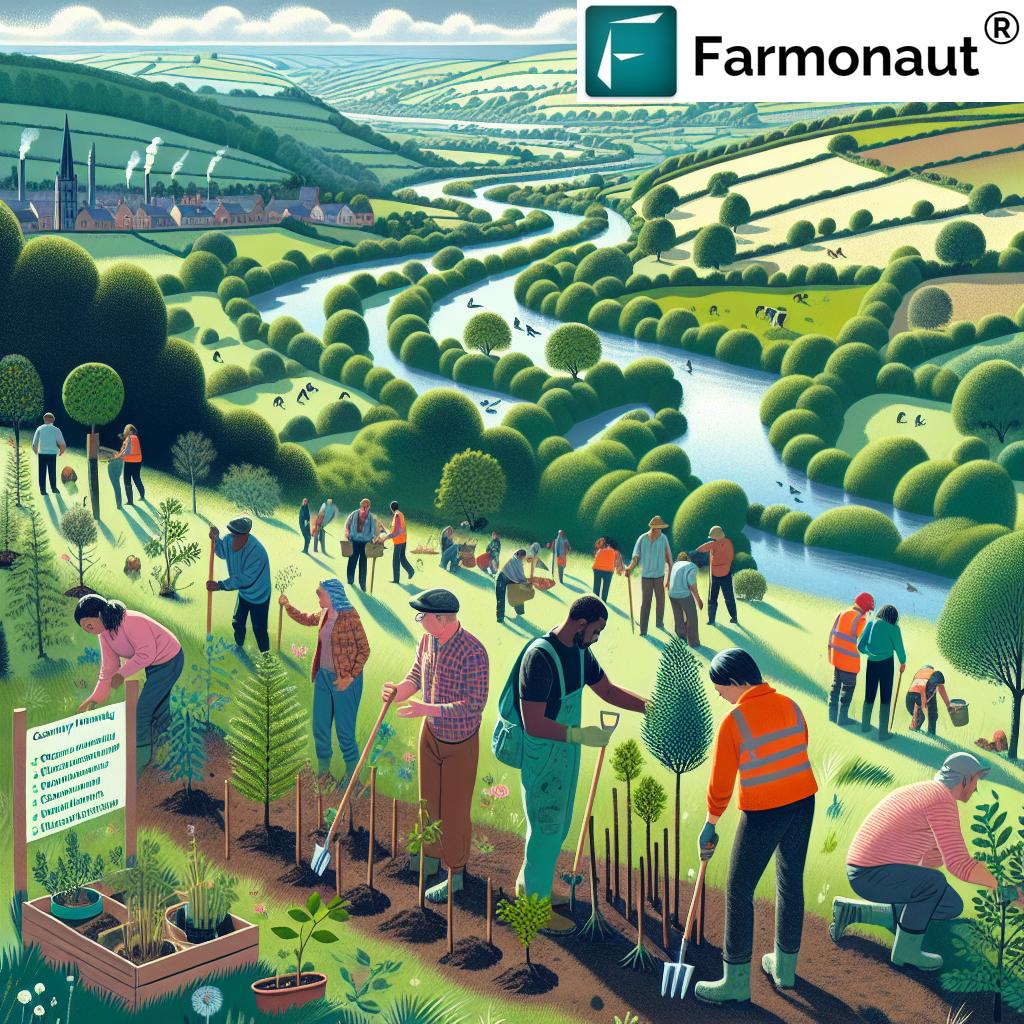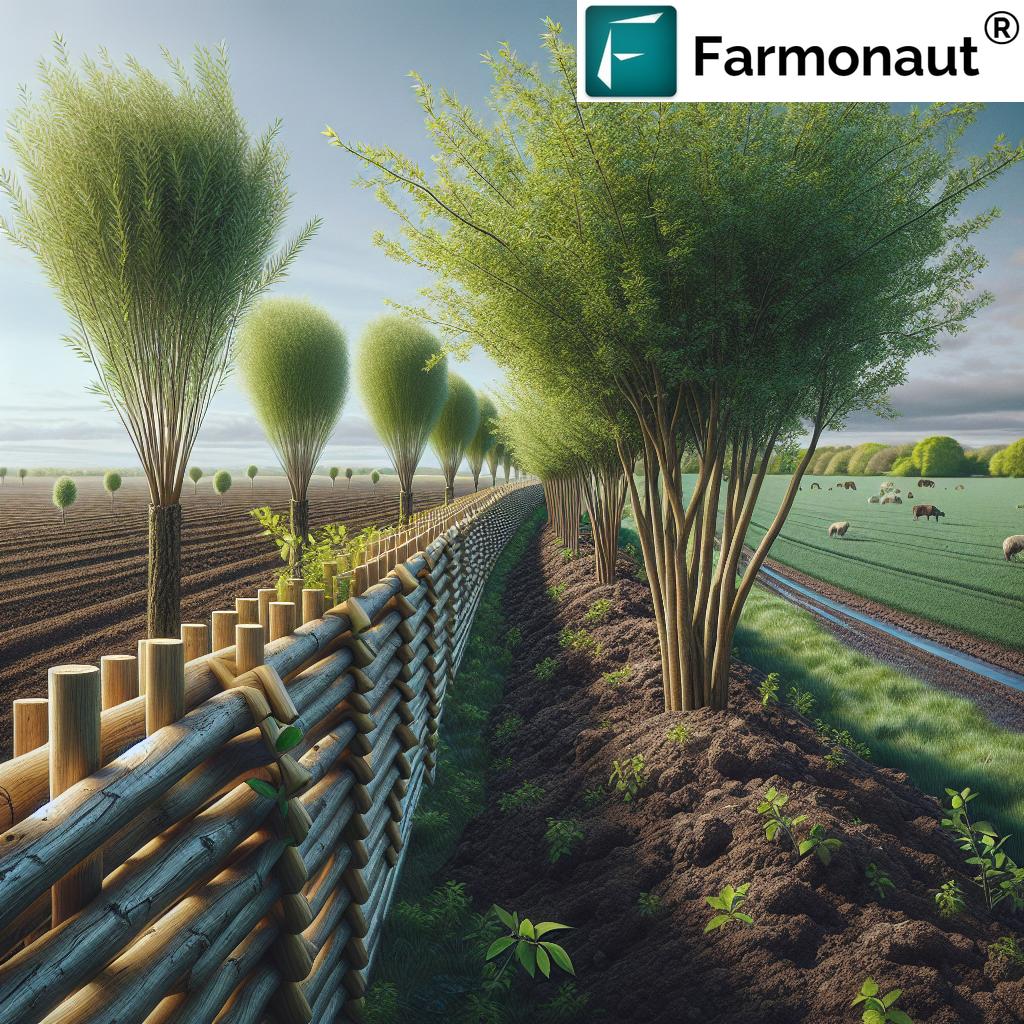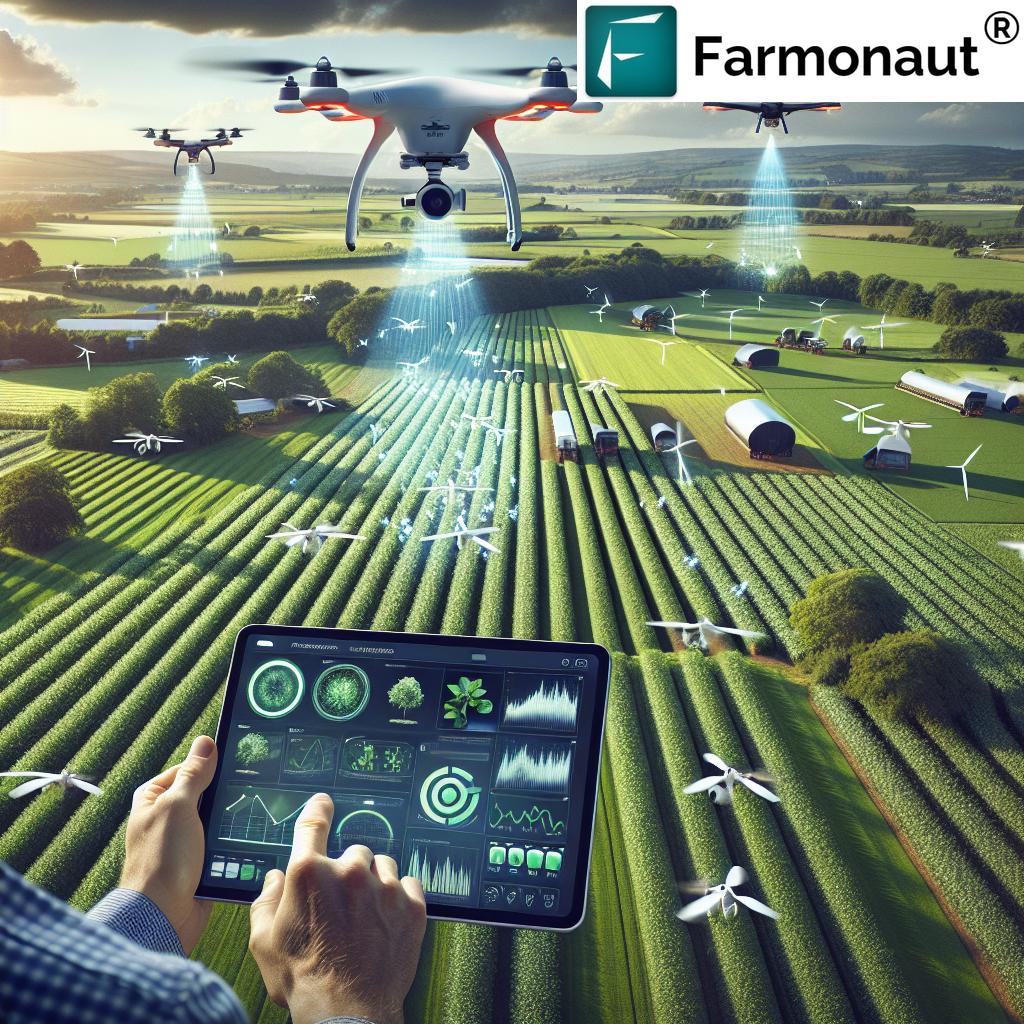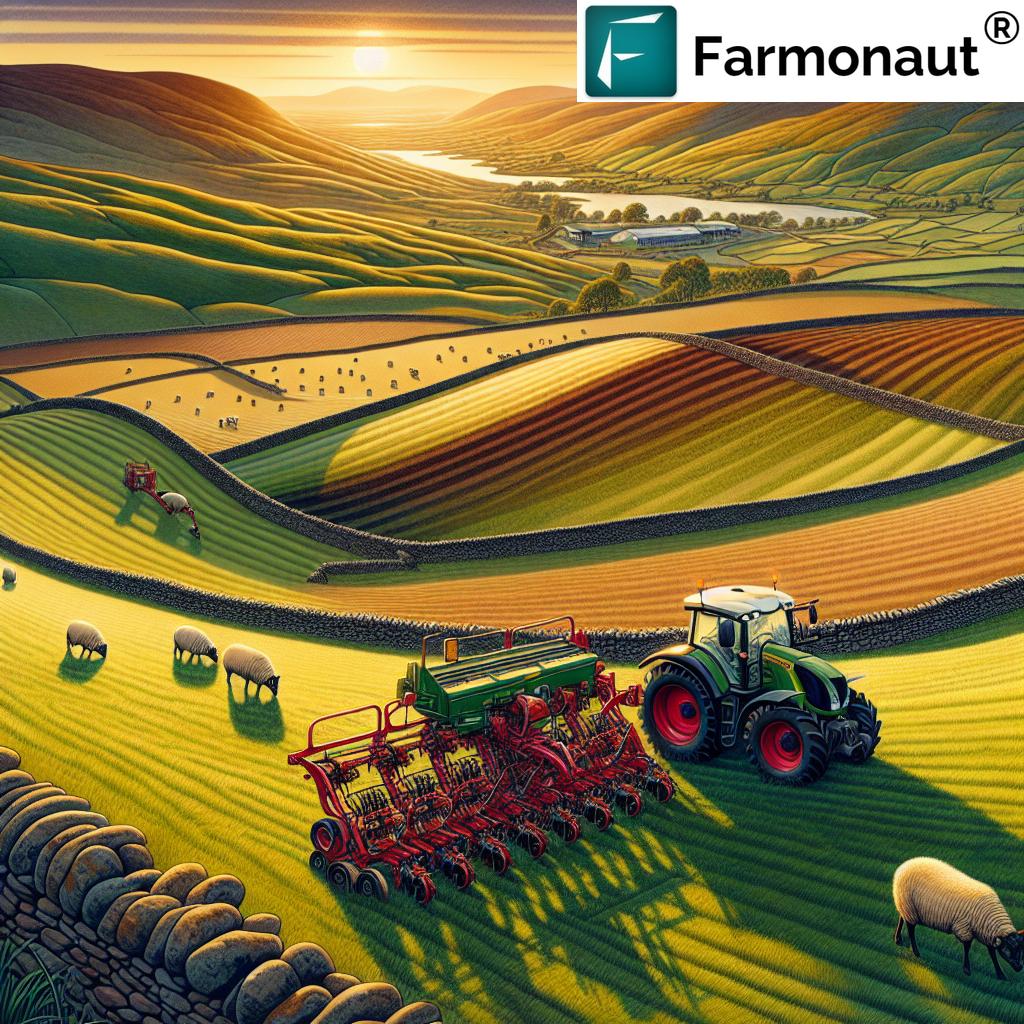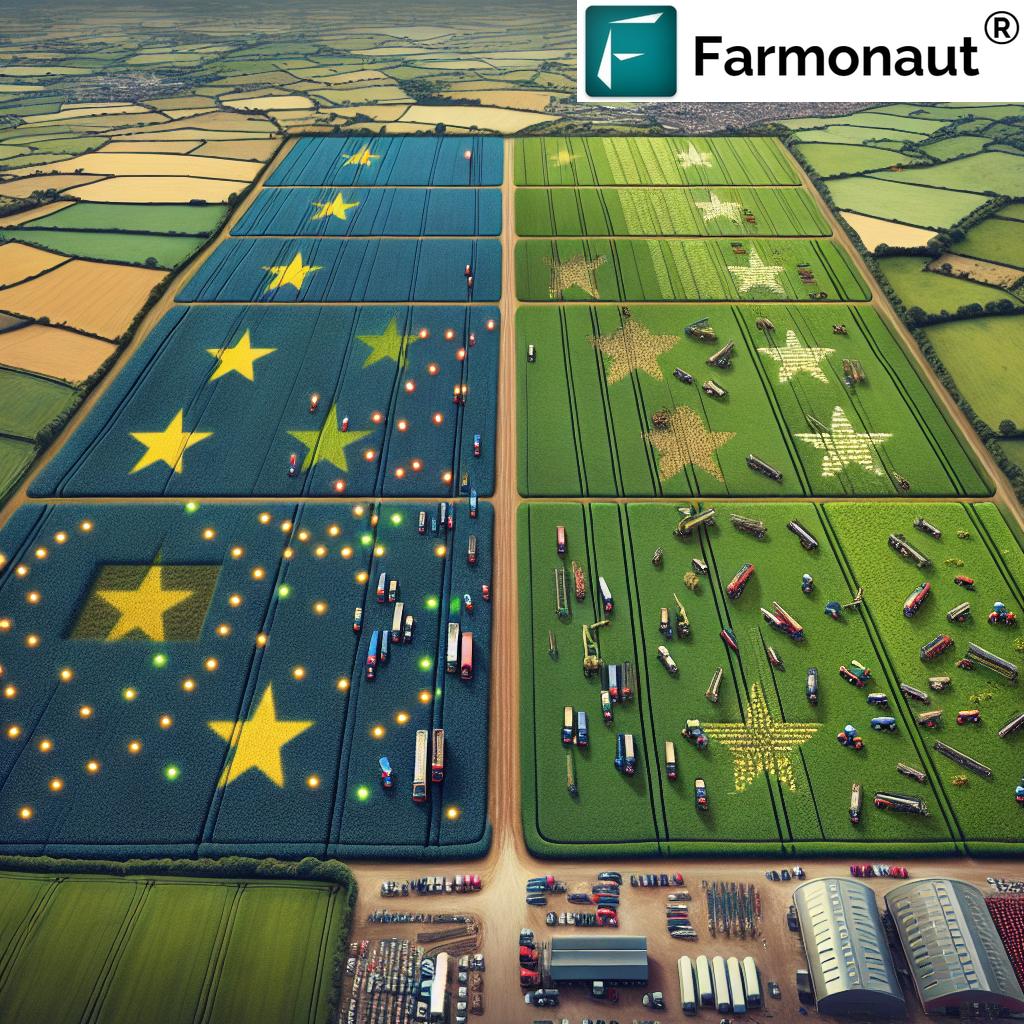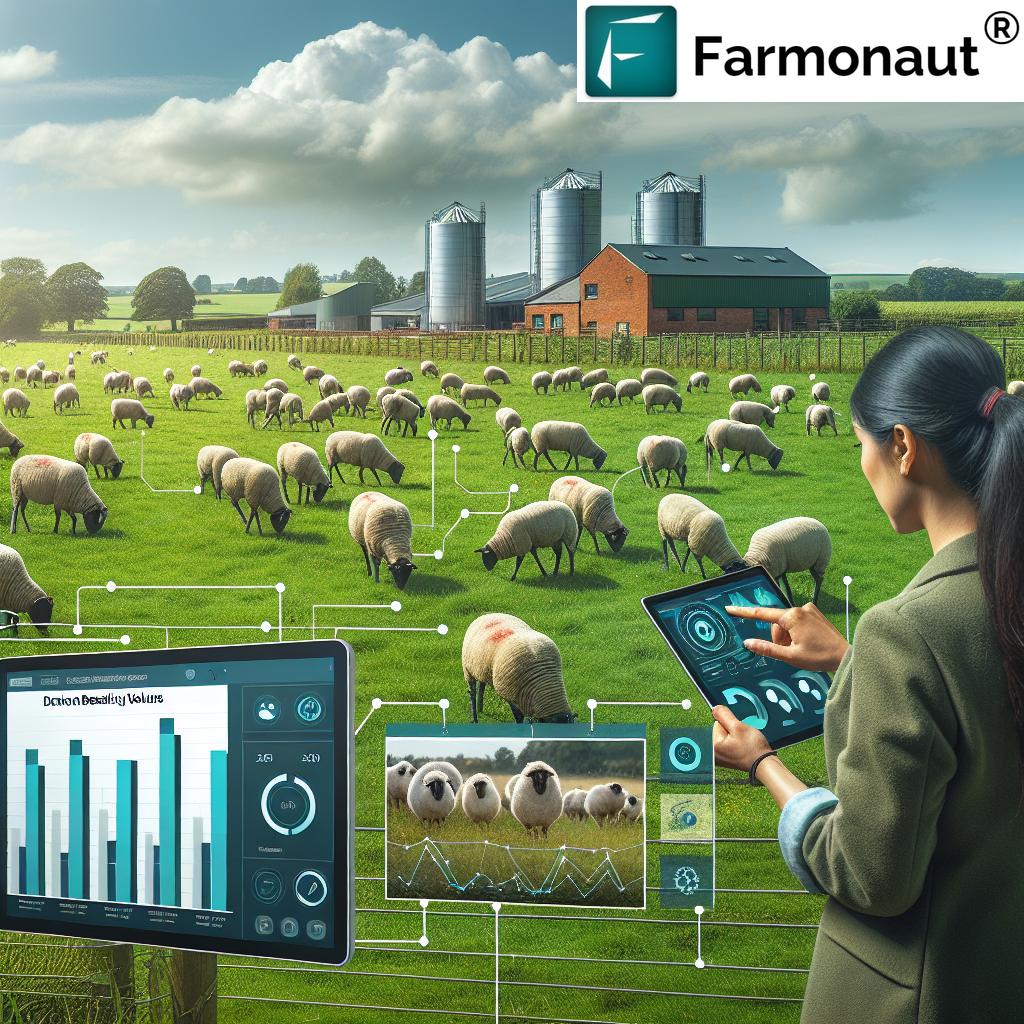Tree Planting Projects: 19,000+ Trees Boost Stroud Biodiversity
“Over 19,000 trees were planted in Stroud, significantly enhancing local biodiversity and supporting sustainable habitats.”
Introduction
In an era where environmental sustainability and biodiversity are paramount, tree planting projects have emerged as a cornerstone strategy for communities aiming to restore lost habitats, capture carbon, and safeguard natural ecosystems. Nowhere is this more evident than in Stroud, where the Stroud Valleys Project (SVP) charity has spearheaded a tree-mendous feat this season. Members of our team, volunteers, public groups, and like-minded organizations have planted over 19,000 trees and hedgerow plants across the district between November 2024 and March 2025. This coordinated effort not only surpasses regional and national planting targets but also demonstrates the potency of community-led, regenerative agriculture practices.
In this comprehensive exploration, we’ll discover how these tree planting initiatives benefit biodiversity, improve wildlife habitats, and provide wide-ranging ecosystem benefits. You’ll see how planting trees and hedgerow can reduce soil erosion and flooding, how oxygen and carbon cycles are affected, and how sustainable green spaces are created. We’ll show how Farmonaut, as a leader in satellite-based farm and environmental monitoring, is helping track impact and empower conservation at scale.
Why Focus on Trees in Community-Based Conservation?
Trees and sustainable green corridors are nature’s guardians. They host an array of species, mitigate climate change by capturing carbon, regulate water cycles, and combat soil erosion. Community tree planting, underpinned by scientific knowledge and modern technology, represents the synergy between traditional stewardship and innovation. When we plant trees for biodiversity, we invest in the future resilience and beauty of our landscapes—for Stroud and beyond.
Community Tree Planting Projects in Stroud
The Stroud Valleys Project, a well-respected environmental charity, has led impactful community tree planting drives throughout the district. For several years, SVP has worked with volunteers, community groups, and the public to plant trees across both the beautiful valleys of Stroud and its surrounding towns and villages. By breaking their own record—planting over 19,000 trees in a single season—they are showing what ambitious, sustainable conservation can achieve.
Our efforts kicked off with clear national and regional targets in mind, adhering to best practices for biodiversity, habitat restoration, and climate goals. Each planting season (November through March) brings together members of the SVP team, local residents, schools, and conservation organizations to plant, nurture, and monitor newly planted saplings and hedgerows.
The Role of Volunteers and Community Members
- Engaging local volunteers of all ages (and four-legged companions!) to create a sense of community ownership
- Partnering with environmental and agricultural groups for expert support
- Working rain or shine in fields, green spaces, canal banks, farms, and playgrounds
- Ensuring diversity by planting native willow, whips, and hedgerow species
- Focusing on areas with the highest conservation need and ecological value
Every single volunteer conservation initiative strengthens bonds within the community and creates living legacies for future generations.
“Community-led projects in Stroud surpassed regional targets by planting 19,000+ trees using regenerative, eco-friendly methods.”
Tree Planting for Biodiversity and Habitat Creation
The Stroud Valleys Project places biodiversity at the heart of its mission. Every tree, hedgerow, and plant planted is chosen with the ecological context in mind. Through careful species selection, we amplify benefits such as:
- Providing habitat and food sources for birds, pollinators, mammals, and invertebrates
- Creating green corridors to connect fragmented habitats across towns, villages, and rural fields
- Improving gene flow and species movement throughout the district
- Enhancing resilience to pests, diseases, and climate change by increasing species diversity
By planting more trees and restoring native hedgerows, we ensure every ecosystem—from the canal edge at Fromebridge to the sporting fields in Nailsworth—is part of a sustainable green space that supports a thriving web of life.
How Is Biodiversity Measured and Improved?
- Species count: Counting the number of unique tree, plant, and animal species in a location
- Habitat complexity: Ensuring vertical (canopy, midstory, shrub, ground) layers to support more niches
- Food webs and pollination: Providing year-round flowering/fruiting for pollinators and birds
- Connectivity: Using hedgerow and tree belts to link otherwise isolated populations
SVP’s Ambitious Targets and Growth
Every year, the SVP team sets out to meet or surpass national and regional planting targets. Our journey saw us plant 6,000 trees and hedgerow plants in 2022/23, then grow to 8,500 trees in 2023/24. This upward trend highlights the enthusiasm and dedication of our team, volunteers, and community members.
The current planting season—November 2024 to March 2025—marks a transformative leap. Over 19,139 new trees and plants have been established, thanks to the relentless drive of SVP’s staff, volunteers, and public engagement. Behind this success is “Woodland Wizard” Stuart Roweth, who, together with the team, set a bold new record that we’re thrilled to have smashed!
The Planting Season: November 2024 – March 2025
This period offers the optimal climatic conditions for establishing new woodland and hedgerow. By concentrating community action in these months, we maximize survival rates for newly planted saplings and create a sense of seasonal tradition within the Stroud valleys. Our efforts are carefully documented, mapped, and monitored—laying the foundation for years of ecosystem services to come.
Impact Overview Table
To better understand the remarkable achievements of SVP’s record-breaking season, let’s review the data-driven impact across Stroud’s key planting sites.
| Planting Site/Location | Number of Trees Planted (Estimated) | Species Diversity (No. of Species) | Estimated Area Restored (hectares) | Key Biodiversity Benefit |
|---|---|---|---|---|
| Fromebridge Canal Development | 2,100 | 8 | 2.4 | Improved waterway corridor, pollinator support |
| Playing Fields, Nailsworth | 1,500 | 6 | 1.2 | Community habitat creation, shade provision |
| Painswick Community Farm | 2,800 | 7 | 2.8 | Agro-ecological diversity, willow whips for wetland value |
| Sapperton (with Regenerative Agriculture Specialists) | 3,100 | 10 | 3.1 | Woodland corridor, soil improvement, carbon capture |
| Other Stroud Towns & Villages | 9,639 | Varied | 8.5 | Suburban wildlife corridors, erosion control |
Note: All figures are community-provided estimates. Individual sites highlight specific benefits—from pollinator meadows by the canal to enhanced woodland networks in Sapperton and rural outreach throughout Stroud’s scenic valleys.
Key Sites and Tree Planting Locations
- Fromebridge Canal Development: Habitat enhancement along critical waterways, connecting water-loving species.
- Playing Fields in Nailsworth: Urban edge planting brings benefits of shade, air purification, and community use.
- Painswick Community Farm: Introduction of wet-loving willow whips and native plant species to support agroecological practices.
- Sapperton: Model of regenerative agriculture practices, focusing on integrating biodiversity with soil care and carbon storage.
- Towns & Villages throughout Stroud: Schools, playgrounds, roadside belts, and private gardens—every green space counts!
How Trees and Hedgerow Planting Benefit Ecosystems
Hedgerow Planting Benefits
- Natural corridors for species migration
- Shelter and nesting sites for birds, insects, and mammals
- Pollinator highways linking wildflower patches
- Reduction of wind erosion and topsoil loss
- Improved water infiltration and reduced flooding risk
Tree Planting Projects: Multifunctional Ecosystem Services
- Reducing Soil Erosion and Flooding: Deep-rooted trees, especially in riparian zones, stabilize river banks, slow water flow, and capture sediment.
- Carbon Capture Trees: Each new tree stores carbon over its lifetime, mitigating greenhouse gas emissions. In Stroud, after 10 years, the trees planted will have stored an estimated 376 tonnes of carbon—equivalent to a commercial flight over 2,590 miles!
- Producing Oxygen: Our expanding woodlands are now producing 200 tonnes of oxygen, improving air quality and supporting public health.
- Water Cycle Regulation: By reducing evaporation and runoff, trees help save over 103 million litres of water—incredible savings for the district’s future.
- Wildlife Habitat Creation: Woodlands and hedgerows form the backbone of complex food webs, sustaining everything from beetles and bats to butterflies and owls.
Regenerative Agriculture Practices in Stroud
Recent years have seen a surge of interest in regenerative agriculture, and Stroud is leading by example. These practices, integrated across our planting sites and especially in Sapperton with the involvement of agriculture specialists, go beyond just sustainability—they aim to restore, revive, and future-proof the land.
- Diverse Planting: Mixtures of broadleaves, fruit and nut trees, willows, and native shrubs optimize ecosystem functions
- Minimal Disturbance: Hand planting and careful site preparation to preserve soil structure and microbial networks
- Continuous Living Roots: Utilizing willow whips, perennial plants, and cover cropping to support soil biology year-round
- Integration with Farms: Trees and hedges enhance agricultural productivity, pollination, pest regulation, and animal shelter
- Rotational Grazing: When possible, integrating trees with pasture, livestock, and cropping systems
Perhaps most importantly, community-led regenerative agriculture bridges the gap between conservation groups, traditional farmers, youth organizations, and tech innovators, setting a blueprint for nationwide ecosystem revival.
Community Involvement for Sustainable Green Spaces
Our work at SVP is rooted in partnership—with volunteers, schools, local councils, and public organizations across Stroud. This model ensures that green spaces are not just planted, but also cared for, enjoyed, and valued by everyone.
How the Community Supports Biodiversity:
- Organizing tree planting events for all ages
- Offering citizen science training to monitor birds, pollinators, and plant survival
- Managing aftercare—watering, mulching, and gap planting in subsequent seasons
- Hosting educational workshops on biodiversity and sustainable land management
- Building a legacy where every tree tells the story of its community
Monitoring Impact and Long-Term Benefits
Planting trees and hedgerow is just the beginning; monitoring their survival, growth, and ecosystem impact is essential. Long-term tracking ensures that our volunteer conservation initiatives truly deliver on their promise for generations.
Measured Benefits (After 10 Years):
- 376 tonnes of carbon stored—equivalent to a cross-continental commercial flight
- Over 103 million litres saved in water evaporation
- 200 tonnes of oxygen produced annually
- Restoration of at least 18 hectares of land, supporting dozens of native species
Habitat corridors and woodlands now link urban, peri-urban, and rural spaces, mitigating the effects of fragmentation and accelerating regional recovery.
Technology in Conservation: Farmonaut’s Innovations
As our landscapes evolve, so do the tools we use to monitor and protect them. Farmonaut’s advanced agricultural technology offers a suite of solutions directly supporting conservation, sustainability, and regenerative practices:
-
Satellite-Based Crop Health Monitoring: Leveraging real-time satellite imagery, SVP and local groups can now monitor newly planted woodlands and hedgerows for vegetative health, early warning of drought stress, and recovery rates across Stroud’s fields.
Use case: Early intervention improves sapling survival and ensures effective resource allocation. - AI-Powered Advisory: Farmonaut’s Jeevn AI advisory system gives farmers and land managers tailored recommendations—be it when to water young terraces or the best planting window for native species to maximize ecosystem benefit.
- Carbon Footprinting: Measure and verify the carbon storage achieved by large-scale tree planting—key for sustainability reporting and meeting climate goals.
- Blockchain-Based Traceability: With product traceability, Farmonaut ensures all actions (from planting to harvest) are logged transparently—supporting ecosystem services markets and inspiring public trust in conservation projects.
- Fleet and Resource Management: Farmonaut’s fleet management tools optimize logistics, help conservation teams organize volunteers and equipment, and reduce the project’s operational carbon footprint.
- Large-Scale Monitoring via API: For organizations ready to scale up and integrate satellite monitoring, Farmonaut offers robust API access and developer documentation—perfect for building custom dashboards, automating reports, or supporting grant applications.
Farmonaut is at the forefront of the agricultural revolution, committed to making data-driven, affordable, and scalable solutions available to everyone invested in sustainable green spaces—from smallholder farmers to ambitious district-wide charities like SVP.
Get Involved and Support SVP’s Mission
Whether you’re a Stroud resident, landowner, business, or student, there are meaningful ways to support tree planting projects and amplify our communal impact:
- Volunteer: Join a planting day, help with monitoring, or lead educational activities.
- Adopt a Tree: Sponsor saplings for future woodland or hedgerow corridors.
- Promote Biodiversity: Encourage your school, town council, or neighborhood committee to plan urban greening concerts or native plant giveaways.
- Use Modern Tools: Leverage Farmonaut’s apps or API—empowering the next generation of citizen scientists and conservation leaders.
Together, we can transform Stroud and inspire other districts to achieve their tree-planting potential. Explore the Farmonaut crop plantation forestry advisory for expert-driven, technologically-advanced conservation solutions!
Frequently Asked Questions: Tree Planting Projects in Stroud
1. What are the immediate benefits of tree planting projects in Stroud?
Immediate benefits include increased wildlife habitat, improved air and water quality, carbon sequestration, reduced soil erosion, and community engagement in sustainability efforts.
2. How are the tree species chosen for each Stroud site?
SVP selects species based on site-specific ecological conditions, focusing on native and adaptable varieties that maximize habitat diversity and long-term resilience.
3. How does hedgerow planting differ from woodland planting?
Hedgerow planting creates linear corridors rich in berries and flowers, connecting habitats and aiding species movement, while woodland planting establishes dense, multifunctional forests for broader ecosystem services.
4. Can technology improve tree planting outcomes?
Absolutely! Tools like Farmonaut’s satellite monitoring and AI advisories ensure higher survival rates, help target areas with the greatest need, and provide transparent monitoring for donors and the public.
5. What is the carbon offset value of SVP’s tree planting?
Over 10 years, these efforts are expected to sequester 376 tonnes of carbon—helping to mitigate climate change in line with international targets.
6. How can I track the impact of tree planting projects?
Follow SVP’s progress through community updates, or use precision satellite imagery tools from Farmonaut for real-time visualizations of green coverage and environmental recovery in Stroud.
Conclusion
The Stroud Valleys Project has shown how dedicated tree planting projects, fueled by passionate volunteers, thoughtful planning, and innovative technology, can deliver profound, measurable gains for biodiversity, the climate, and our communities. By working together, we not only rescue habitats from the brink but lay down legacy forests and corridors that will sustain future generations.
Whether your focus is carbon capture, building sustainable green spaces, or creating wildlife-rich corridors for the future, your involvement matters. Let’s learn from Stroud’s playbook—where 19,000+ new trees are only the beginning of a greener tomorrow. For further support, land management innovation, or to track large-scale environmental progress, see how Farmonaut’s technological tools and advisory can make a difference for your project or region.
Ready to join the movement for biodiversity and sustainability?
Explore digital tools, volunteer locally, or start a planting initiative in your own community—and let’s ensure every season is a record-breaking one for our planet.


